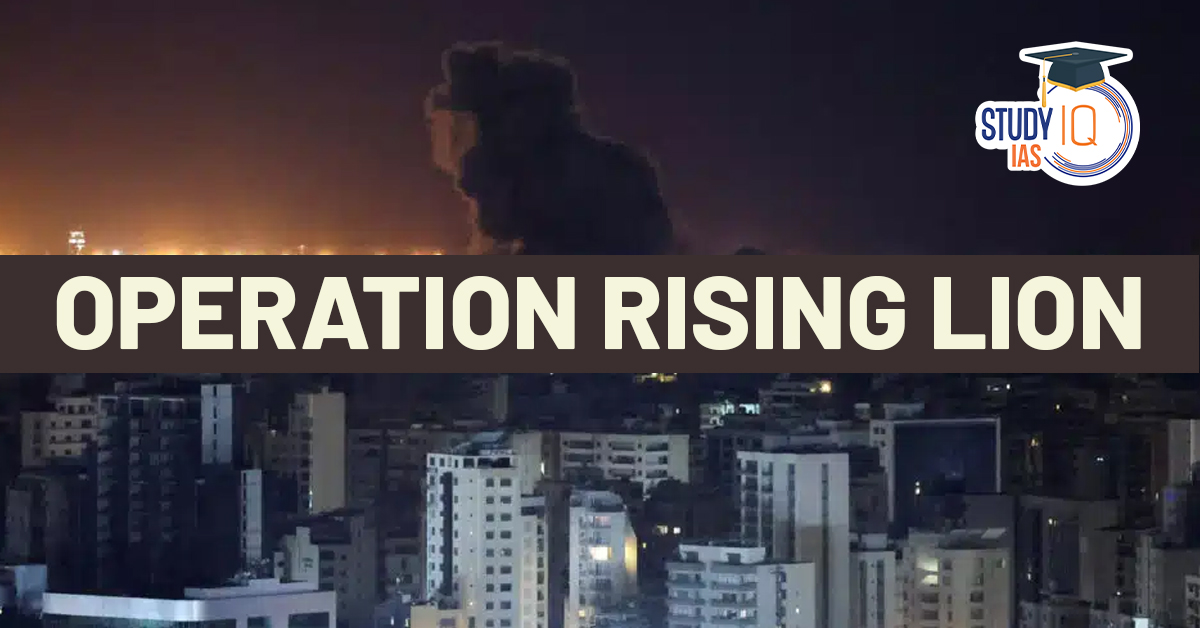Table of Contents
Israel attacked Iran’s Nuclear Sites in the early hours of Friday, June 13, 2025. Israel’s bold strikes under “Operation Rising Lion” aimed at Iran’s military and nuclear infrastructure have caused high-profile deaths and a rapid Iranian drone retaliation. While the world leaders urge restraint, the incident has profoundly destabilised Middle Eastern geopolitics and made nuclear diplomacy more complex.
Israel’s Attacks on Iran’s Nuclear Sites under Operation Rising Lion
In a dramatic heightening of longstanding tensions, Israel has unleashed a series of mass strikes against Iran, targeting its nuclear sites and military installations. The attacks, referred to as “Operation Rising Lion” by Israeli Prime Minister Benjamin Netanyahu, were initiated in the early hours of Friday morning, June 13, 2025.
Accounts report explosions echoing throughout Iran, including the capital city of Tehran, and significant nuclear facilities like the Natanz uranium enrichment plant. Israeli leaders have said that the attacks were a “preemptive, precise, combined offensive” to block Iran from being able to develop a nuclear weapon, something they allege Iran is on the cusp of creating. Netanyahu told Fox News that the Operation Rising Lion is imperative for Israel’s “very survival” and will drag on for as long as necessary to “erase this threat.”
Objectives of the Attack on Iran
- Main Objective: Interfere with Iran’s capacity for weapon-grade uranium development—Enrichment had just hit 60% purity, close to weapons-grade level in days
- Valuable Casualties: IRGC Commander Gen. Hossein Salami, Chief of Staff Gen. Mohammad Bagheri, and nuclear scientists such as Fereydoun Abbasi-Davani and Mohammad Mehdi Tehranchi were among the killed.
- Sabotage of air defences: Secret Mossad missions purportedly incapacitated Iran’s radar and missile defence systems
Iranian state media have reported major casualties, including the death of senior military figures like Major General Hossein Salami, commander-in-chief of the Islamic Revolutionary Guard Corps (IRGC), and some nuclear scientists. Photos and news from Iran indicate burned-out housing structures and blazes in the capital, and Iranian leaders have threatened a “harsh response” to the assaults.
Also Read: Major Nuclear Facilities of Iran
What is Operation Rising Lion?
On June 12–13, 2025, the Israel Defence Forces (IDF) initiated Operation Rising Lion, a chain of preemptive strikes on Iranian nuclear enrichment plants—particularly Natanz—along with missile and air-defence facilities in the vicinity of Tehran, Shiraz, Tabriz, Lorestān, and others. This operation employed five waves of attacks by employing more than 200 aircraft, releasing more than 330 munitions over almost 100 important targets.
Operation Rising Lion represents a turning-point escalation in the Middle East. With widespread strikes against Iran’s nuclear and military infrastructure, and reported high-profile fatalities, it shows Israel striking without U.S. military support. It severely imperils nuclear diplomacy and has momentous geopolitical and energy-market implications. The international community now closely observes Iran’s next steps—and whether this will initiate an all-out conflict or compel a return to talks.
International Atomic Energy Agency (IAEA) Response
The International Atomic Energy Agency (IAEA) has confirmed that the Natanz site was among the targets hit and is monitoring radiation levels. However, the extent of the damage to the deeply buried facilities remains unclear. The strikes come amidst surging tensions over Iran’s accelerated uranium enrichment program, which the IAEA recently censured for non-compliance with nuclear non-proliferation obligations.
The United States itself said it was not a participant in the attacks, and US Secretary of State Marco Rubio pointed out that the US priority is to guard American troops in the area. The global community is keeping a close eye on the developments, with concerns quickly spreading regarding the likelihood of an escalated military conflict in the Middle East and its implications for world stability and oil markets. Both Israeli and Iranian airspaces are closed, and a state of emergency has been proclaimed in Israel, preparing for possible retaliation by Tehran.
Regional and Diplomatic Impact
- Iranian counter-attack: Iran hit back with more than 100 drones, executing a rapid counter-attack campaign
- Regional tensions: Skies above Jordan, Iraq, and southern areas were briefly shut down, and sirens blared through Israel as the country issued emergency warnings
- U.S. response: The attack was unilateral, without direct U.S. military intervention, although American resources are on standby
- International responses: Diverse reactions—some supporting Israel’s moves, others threatened retaliation and disruption to current nuclear negotiations in Oman
- Energy market implications: Oil prices jumped about 8% on concerns of broader Middle East instability.
Strategic Consequences of the Operation
- Pre-emptive strike justification: Israel’s government presented it as needed to keep Iran from acquiring a nuclear weapon “within a few months
- Defence restrictions: The analysts pointed out that Israel does not have heavy bunker-busting weapons such as the U.S. Massive Ordnance Penetrator, restricting the possibility of completely destroying deeply buried fortified facilities
- Escalation risk: Iran has threatened “bitter and painful” reactions, possibly raising tensions throughout the region


 Punjab PCS Question Paper 2025 Out: Down...
Punjab PCS Question Paper 2025 Out: Down...
 Punjab PCS Answer Key 2025 (Out Soon): G...
Punjab PCS Answer Key 2025 (Out Soon): G...
 JKPSC Question Paper 2025 Out: Download ...
JKPSC Question Paper 2025 Out: Download ...

























